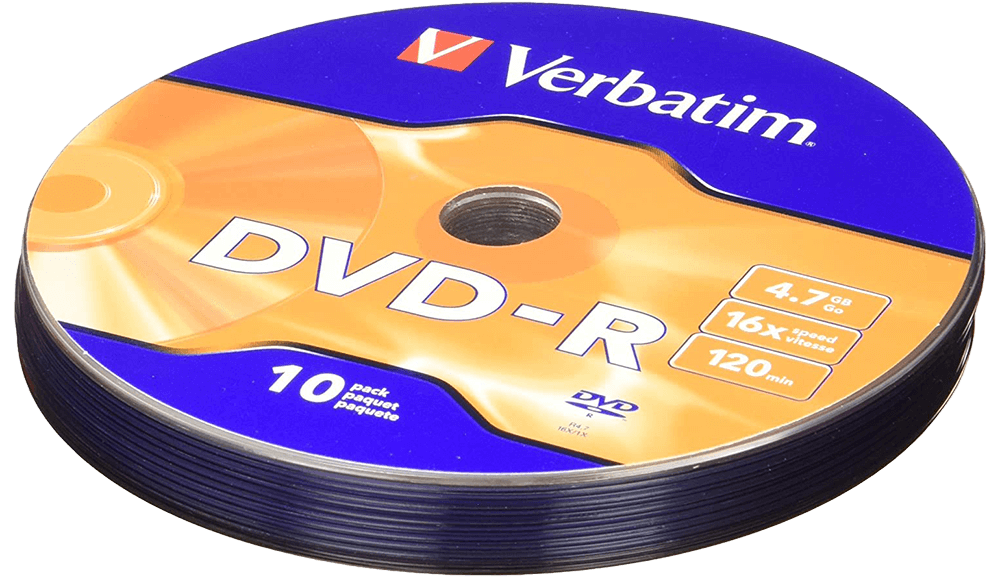DVD-R
Stands for "Digital Versatile Disc Recordable" and is pronounced "DVD dash R."
DVD-R is one of two standards for recordable DVDs, along with DVD+R. It is a write-once format, meaning that data is written to the disc permanently and cannot be erased or modified. Of the two standards, DVD-R is compatible with more players than DVD+R. Single-layer DVD-R discs have a capacity of 4.7 GB of data or video; double-layer discs can store 8.5 GB. Only a compatible DVD-R or Hybrid (DVD±R) optical drive can write to a DVD-R disc. The rewritable version of DVD-R is called DVD-RW.
DVD-R and DVD+R discs are both writable optical media formats. A DVD-R drive uses a laser to burn a series of spots onto a layer of heat-sensitive dye on a blank disc. Like the pits on a professionally-pressed DVD, these spots encode digital data onto the disc that a laser in the drive reads and decodes. Both recordable DVD standards have microscopic grooves that run from the start of the disc to the end that guide the laser as it burns data. This groove has a slight but consistent wobble that ensures the disc is spinning at the correct speed, wobbling at a frequency of 140.6 kHz on a DVD-R (compared to a much faster 817.4 kHz on a DVD+R).

Even after a DVD-R has been written to once, if there is still space on the disc, a drive can burn additional sessions to add more data. However, the DVD-R format uses a less precise tracking method when writing to the disc than DVD+R. Starting another session on a DVD-R requires a larger buffer between the two sessions, wasting a small amount of disc space.
 Test Your Knowledge
Test Your Knowledge